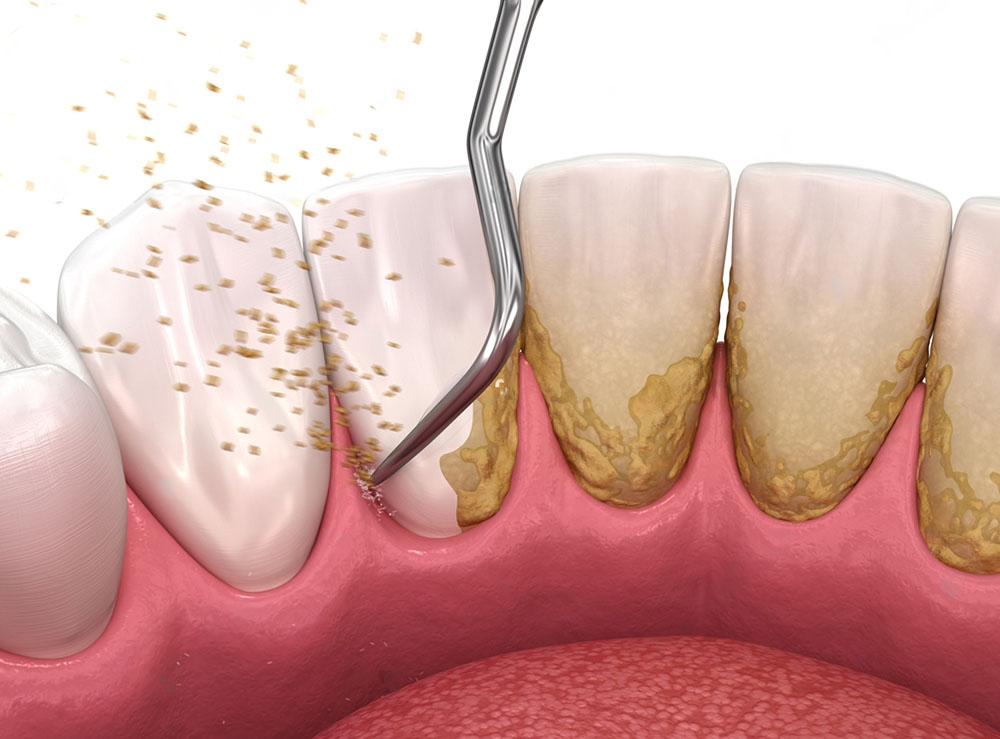I. Introduction
A. What is dental tartar?
B. Importance of tartar removal
C. How tartar forms on teeth
II. Tartar removal methods
A. Professional cleaning procedure 1. Dentist appointment 2. Manual removal of tartar 3. Use of ultrasonic instruments
B. Tartar removal at home 1. proper brushing 2. flossing 3. mouthwash
III. Tips to prevent tartar build-up
A. Regular oral hygiene 1. correct and frequent brushing 2. proper flossing 3. antibacterial mouthwash
B. Healthy eating 1. Avoid sugary and processed foods 2. Eat food rich in fibre 3. Drink water regularly
Como remover o tártaro dos dentes
Dental tartar is a common problem that affects the oral health of many people. Tartar buildup can lead to more serious problems, such as tooth decay and periodontal disease. In this article, we’ll explore how to remove tartar from your teeth, as well as provide tips for preventing its buildup.
What is Dental Tartar? Dental tartar, also known as dental calculus, is a hard, yellowish layer that forms on teeth due to plaque build-up. Plaque is a sticky substance composed of bacteria and food debris. Over time, if not properly removed, plaque turns into tartar, which cannot be removed through brushing alone.
Importance of Tartar Removal: Tartar removal is essential for maintaining good oral health. Tartar can cause inflammation of the gums, known as gingivitis, and if left untreated, can progress to more serious periodontal disease. In addition, tartar provides an environment for more bacteria to build up, increasing the risk of tooth decay and bad breath.
How tartar forms on teeth: Tartar forms from the mineralization of bacterial plaque. When plaque is not removed properly, it solidifies and adheres to the teeth, forming tartar. Hard-to-reach areas, such as the gumline and spaces between teeth, are more prone to tartar buildup.
Tartar removal methods: There are different methods to remove tartar from teeth, with professional cleaning procedures and at-home oral hygiene being the main ones.

Professional cleaning procedure: Scheduling a consultation with the dentist is important to perform a professional and efficient cleaning. During the consultation, the dentist will perform the following steps:
Manual tartar removal: Using special instruments, your dentist will carefully remove tartar from your teeth. These instruments have sharp, curved tips that allow them to reach hard-to-reach areas. Your dentist will use proper techniques to ensure that all the tartar is removed safely and without damaging your teeth.
Using ultrasonic instruments: In some cases, your dentist may choose to use an ultrasonic device to remove tartar. This device emits high-frequency sound waves that help break up the tartar and make it easier to remove. The use of the ultrasonic device is usually accompanied by a stream of water to wash away the debris.
Tartar removal at home: In addition to professional cleanings, it is essential to maintain a proper oral hygiene routine at home to prevent tartar buildup. Here are some recommended practices:
Proper brushing: Brush your teeth at least twice a day using a soft-bristled brush and fluoride toothpaste. Use gentle, circular movements to ensure that all tooth surfaces are reached. Don’t forget to brush your tongue, as it can also accumulate bacteria.
Flossing: Flossing is essential for removing plaque and preventing tartar build-up between teeth. Gently floss between each tooth in a back-and-forth motion. Make sure to reach the gum line, where tartar tends to form most often.
Mouth Rinses: Using an antiseptic mouth rinse after brushing and flossing helps eliminate bacteria that can contribute to tartar formation. Choose a mouth rinse recommended by your dentist and follow the instructions for use.
Tips to prevent tartar build-up: In addition to the removal methods mentioned, it is important to adopt healthy habits to prevent tartar build-up:
Regular oral hygiene: Maintain a consistent oral hygiene routine by brushing your teeth at least twice a day and flossing daily. Don’t overlook the importance of this daily care to prevent plaque build-up, which can lead to tartar.
Healthy eating: Avoid foods high in sugar and processed carbohydrates, as these contribute to the growth of bacteria in the mouth. Eat a balanced diet rich in healthy foods, such as fruits, vegetables and fiber-rich foods, which help stimulate saliva flow and naturally clean teeth.
Drink Water Regularly: Water plays a key role in oral health. Drinking water regularly helps keep your mouth hydrated, stimulates saliva production and helps remove food debris and bacteria. In addition, water also helps neutralise acids in the mouth, reducing the risk of tartar formation.
Conclusion: Proper removal of tartar from teeth is essential for maintaining good oral health and preventing more serious problems such as periodontal disease. The combination of regular visits to the dentist for professional cleanings and a consistent oral hygiene routine at home are key to ensuring a healthy, tartar-free smile. Remember to follow the prevention and daily care tips to prevent plaque buildup and keep your teeth clean and protected. Take good care of your smile and enjoy excellent oral health!



